Though not as grand as theDuomo, Sant’Ambrogio, named for Milan’s patron saint, is older, and decorated with bits of Roman architecture even older than itself. All these shots were taken without flash or tripod.
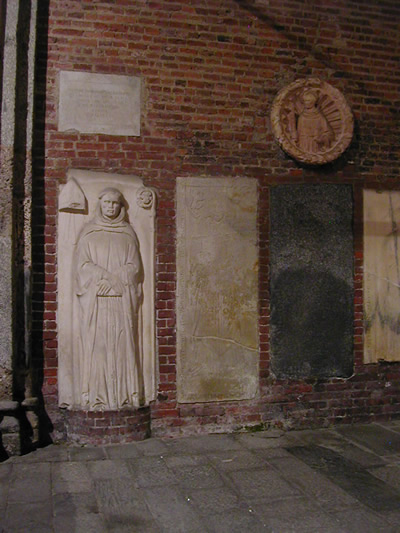
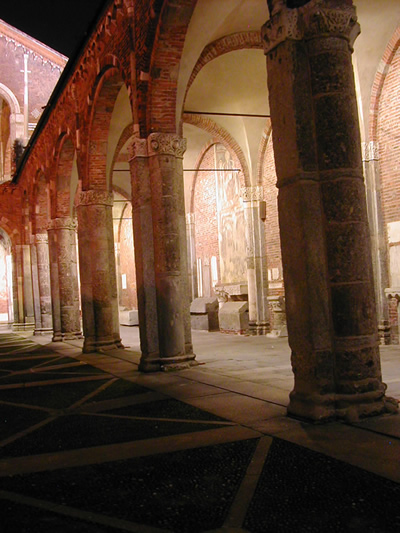
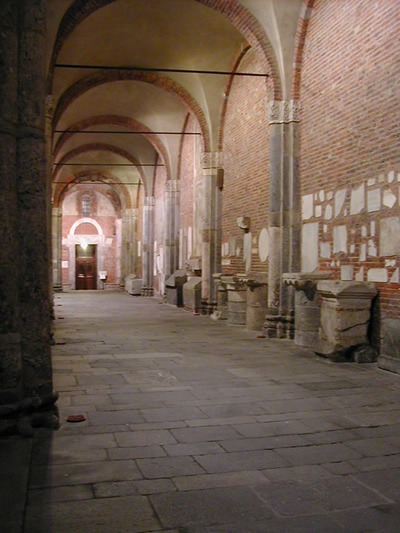
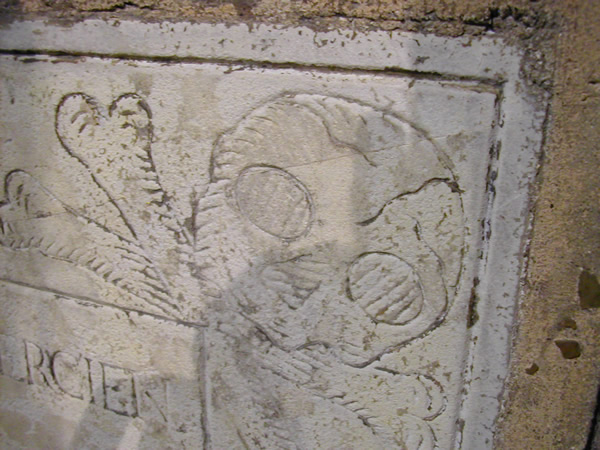
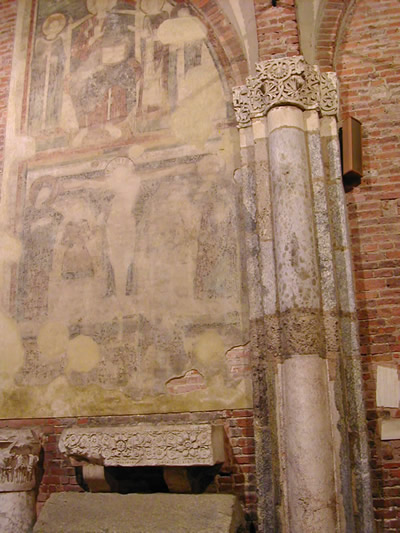
more photos from Sant’Ambrogio:
Though not as grand as theDuomo, Sant’Ambrogio, named for Milan’s patron saint, is older, and decorated with bits of Roman architecture even older than itself. All these shots were taken without flash or tripod.





more photos from Sant’Ambrogio:
Italy is justly renowned for many centuries and styles of stunning architecture. Unfortunately, all the good stuff is at least a century old. Before and after our move to Lecco in 2003 (initially into a rented apartment), we spent over a year looking for a home to buy. Much of what we saw was of recent construction (or still being built), and very disappointing – exterior styles ranged from boring to ugly.
At some point we thought, “Okay, never mind the outside, we’re not going to look at it from the outside much anyway, right?” But we were also baffled by some of the choices made about the insides. In our three-room apartment in Milan, built in the 1950s, each room was at least 3×4 meters (except the bathroom and kitchen). Which was a good thing, because each room had to be mult-purpose: one corner of our bedroom was my office, Enrico’s piano resided in Rossella‘s room, and the refrigerator was in the living room because the kitchen was too small to hold it.
Average room size has decreased over the decades. In the new places we looked at around Lecco, a so-called child’s room was barely large enough for a single bed and a small desk. This is certainly not enough living space for a teenager, and doesn’t seem to take into account the fact that Italian offspring routinely live at home til well into their 20s, or even later. Or is this a parents’ ploy to encourage the kids to leave home?
Some new homes inexplicably wasted stunning locations and views. Most of the townhouse-style condos we looked at were four stories tall, with a garage and family room on the bottom floor (partially built into a hillside), and a slope-ceilinged attic intended as a bedroom. The attic, being on top, would have the best views of the lake and mountains, but usually had only skylights – which give no view at all unless you open one up and poke your head out. (The exception was a top floor apartment that had been redone with great taste by a friend’s parents. They had cleverly placed the skylight so that, lying in bed, you would have a perfectly-framed view of the Medale, a sheer-cliffed mountain looming over Lecco.)
One still-being-built townhouse had a second-floor terrace with a lake view, accessed by a large sliding glass door. One would expect such a view to be enjoyed by a master bedroom or upstairs living room. But no: the terrace opened onto a hall that was too narrow to hold even a writing desk, while the bedrooms at each end were gloomy, with tiny windows. The man showing us the place was deeply offended when I suggested that this was a stupid arrangement; I’ll bet one of his relatives designed it.
And that’s part of the problem. There exists in Italy a professional class called geometra, who attended a professional secondary school to learn the rudiments of designing and constructing buildings, and are legally licensed to do so, for buildings of limited size and complexity; they’re cheaper to hire than real architects. Apparently the geometra courses do not mention aesthetics, a lack which shows in the houses they design: boxy and unimaginative at best, downright ugly at worst, so that “casa del geometra” has become an epithet for any dwelling that is unpleasant to look at.
In all our peregrinations we did see a few beautiful houses, probably designed by architects to the owners’ specifications. I loved some of these, but they weren’t for sale. After months of increasingly despairing searches, we saw a place that, though only four years old, was designed (I don’t know by whom) with intelligence and style: big windows and terraces to make the most of the view, including a huge dormer window in the attic room (mansarda), looking out on Lake Como and the surrounding mountains. We walked through the house for ten minutes, looked at each other, and said: “This is it.” And it is.
I haven’t been following the Muti-La Scala fight closely, but I do have a bit of inside information. The New York Times said:
“MR. MUTI had reason for optimism. He had just presided over what was widely proclaimed the cultural event of the year in Europe on Dec. 7, the reopening of La Scala after a three-year restoration and renovation. The project had encountered protests from preservationists and the usual construction delays, but the finished house was widely regarded as a masterpiece, with its new stage contraptions functioning smoothly and its venerable décor glistening afresh.”
Uh, yeah, right. The finished house was not finished. The glistening decor had been hastily cleaned of construction dust, dangling wires tucked away, etc., for the big opening-night performance. Stagehands nearly lost limbs operating the new and unfamiliar stage contraptions, but, from the audience’s point of view, everything did run smoothly.
Performances then moved right back to the Teatro degli Arcimboldi, where they have been held since the La Scala restoration began, and will continue to be held until it is truly finished. The grand opening night marking its completion was, appropriately enough, a messinscena (mise en scéne).
Going to Milan for the Expo? Check out these great tips on Where to Eat, Play and Stay and What You Need to Know.
Getting from the airport to the city:
Left luggage room at Malpensa: on the Arrivals floor, go down the corridor to the right (past the bus/train ticket office) and you’ll see it on your left. They will x-ray your luggage and charge 2.50 euros per piece per day.
Getting around Milan: public transport.
Taxis can be found at marked taxi stands throughout the city, or can be called at any of these numbers: 02-8585, 02-6969, 02-4040 (if you need a taxi at a particular time, you can reserve in advance). They are not allowed to stop for pickup just anywhere, so it is usually ineffective to try to flag them down. Taxis in Milan are expensive. A taxi from the city to Malpensa airport will cost at least 100 euros.
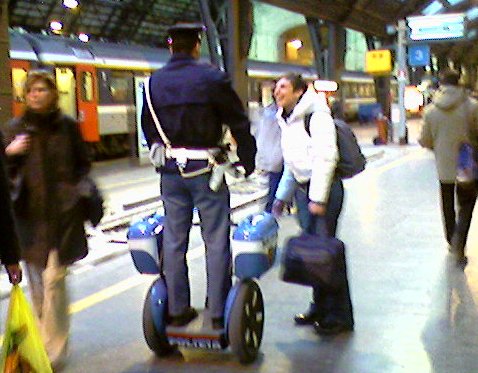
Nov 14, 2003
Many travelers to Italy seem to be stuck in a rut: the travel forums are an endless litany of Florence, Rome, and Venice. Personally, I don’t even like Florence, but I’ll save that rant for another time. (I hate crowds, especially crowds of tourists where I’m likely to be thought one of them.) So I like to go to the out-of-the-way places, a few of which are mentioned here on my site.
Poor Milan is very mistreated by would-be tourists. Travelers advise each other to skip it: “There’s nothing worth seeing.€”
I beg to differ. Leonardo da Vinci spent some of his most productive years in Milan; we have a castle (Castello Sforzesco) and the Last Supperto prove it. It took me ten years to get to the Last Supper, and I wish I’d gone sooner. Book tickets for the Last Supper here – most of the year you do need to book in advance.
If you care at all about classical music (including opera and ballet), there’s La Scala.
If you like shopping, Milan is one of the fashion and shopping capitals of the world. It’s great fun simply to walk around and look, even if you’re not buying. See it in Milan first; you’ll be wearing it in the US next year.
Oh, yes, and there’s also the Duomo, one of the world’s largest and most overdone cathedrals; think of it as fractal Gothic. 600 years and they’re still building on.
Milan is also within easy reach of some of the most beautiful places in the world, such as Lake Como.
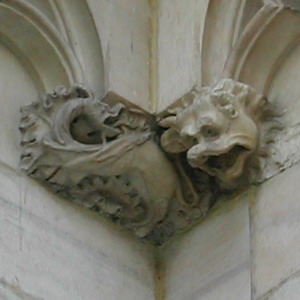
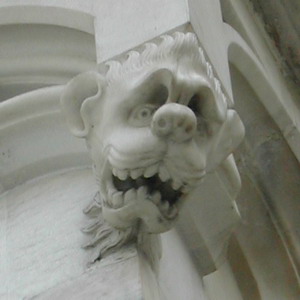
Milan has what is probably the world’s oldest shopping mall, the originalGalleria, in the heart of downtown next to the Duomo. But you won’t find “big box” malls such as they have in the US. There are a few, way outside town, but they are mostly discount stores and not very exciting unless you live here. Way, WAAAAY out of town there is the Serravalle Outlet Mall. I’ve never been there, but it’s been favorably covered in the New York Times.
If you want high-fashion clothing and are willing to pay Milan prices (ouch!), the fashion district is also near downtown, around via Montenapoleone and via della Spiga. The shops in Corso Vittorio Emmanuele are slightly more reasonably-priced, cheaper still is Corso Buenos Aires.
The Economist Guide to Shopping in Milan
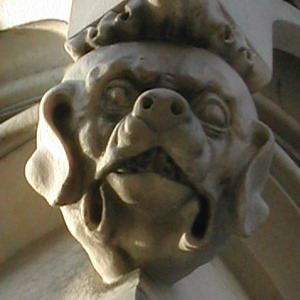
Rossella started high school last week, she’s going to liceo artistico (art high school). Monday was the first day of regular classes, so they’re moving through the timetable and meeting their teachers one by one. For religion class they have a Catholic priest, who nonetheless explained that his class would not be catechism: “I’m not here to convert anybody.” He asked the class why they had chosen liceo artistico; someone must have mentioned creating beautiful things, because the conversation then moved on to how to define beauty. Ross tried to express something about beauty being in the eye of the beholder. Her example was: “My mother loves India and sees beauty in it; my father can’t understand how anyone could see beauty in a place of such poverty and squalor.”
I was struck by this, because I haven’t often talked or written about India in terms of beauty (partly because I don’t have much gift for physical description). Ross is right, I do see beauty in India, and in most other places I’ve visited. Where I can’t find beauty, I can usually at least find humor and interest. I guess that is my particular, peculiar gift.
There is beauty almost everywhere, if you are open to it. Take Milan, for example. At first glance it’s drab and dingy, and not considered much of a tourist destination. As an industrial center, Milan was heavily bombed during WWII, and afterwards rebuilt hastily – and often tastelessly. The few impressive pieces of architecture left are too over the top to be called beautiful: the world’s most Gothic cathedral (unfinished – after 600 years they’re still adding frills), and a huge marble railway station, the very epitome of Fascist architecture.
But, if you’re willing to look, you can find fascinating things. One of my favorites is an apartment building in via Vivaio, done in heavy stonework to look rather like a castle, adorned with huge cherubs near the roof. Peer into the entryway and admire the interplay of red brick, polished gray stone, and golden tiles. Weirdly, you might hear a peacock’s harsh call. This is from across the street. That place is owned by a wealthy retired couple, who obtained permission from the Milan city government to knock down the adjacent building and create a huge garden for themselves, by willing the entire property to the city after their deaths. In the meantime, they have filled the garden with peacocks and flamingoes.